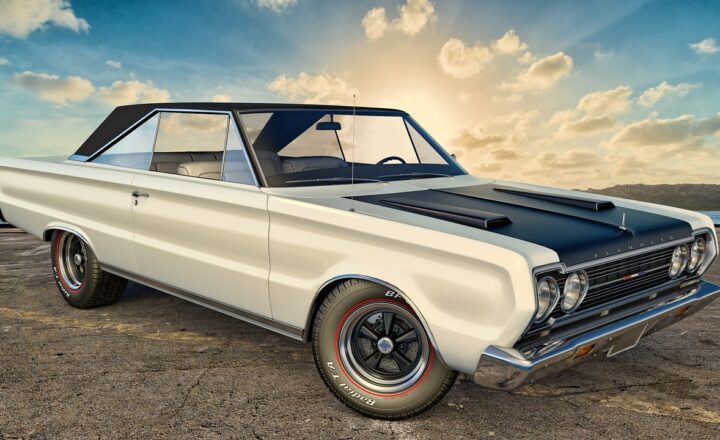Unraveling the Secrets of the World’s Fastest Cars: What Makes Them Tick
November 19, 2024

In the realm of automotive engineering, the pursuit of speed has captivated enthusiasts, engineers, and even casual observers for decades. The world’s fastest cars are not just a fusion of powerful engines and aerodynamic designs; they are marvels of technology that incorporate intricate systems to achieve unparalleled performance.
1. Understanding Speed: The Physics Behind Fast Cars
To comprehend what makes these formidable machines tick, it’s essential to dive into the physics of speed. Speed is the result of numerous factors, including power-to-weight ratio, aerodynamics, and traction.
– **Power-to-Weight Ratio:** This critical measurement signifies the relationship between the car’s power (measured in horsepower) and its weight (in kilograms). A lower weight combined with a powerful engine allows for quicker acceleration and higher top speeds.
– **Aerodynamics:** The shape of a car plays a crucial role in its ability to slice through the air. Designers create sleek profiles to minimize drag, maximizing efficiency and speed.
– **Traction:** Achieving and maintaining grip on the road is crucial to handling high speeds. This involves the design of tires, suspension setup, and even the car’s weight distribution.
2. Advanced Engineering and Technologies
High-performance cars employ several advanced technologies that contribute to their speed. Here are some key elements:
– **Turbocharging and Supercharging:** These systems increase engine power by forcing more air into the combustion chamber, allowing for more fuel to be burned and subsequently more power to be generated.
– **Lightweight Materials:** The use of carbon fiber, titanium, and aluminum reduces weight while maintaining strength and rigidity. This shift away from traditional steel is vital for performance cars.
– **Active Aerodynamics:** Some of the fastest cars feature adjustable aerodynamics that respond to speed. For instance, spoilers might rise at high speeds to generate downforce, improving grip at the cost of drag.
3. Iconic Brands and Their Fastest Models
Several car manufacturers have made significant contributions to the world of speed, with iconic models setting records.
– **Bugatti Chiron Super Sport 300+:** Known for breaking the 300 mph barrier, the Chiron Super Sport 300+ boasts an 8.0-liter W16 engine producing 1,577 horsepower. This car demonstrates that meticulous engineering and lavish design can produce astounding results.
– **Koenigsegg Jesko Absolut:** With a theoretical top speed exceeding 300 mph, the Jesko Absolut exemplifies Swedish engineering prowess with its lightweight construction and powerful twin-turbo V8 engine.
– **SSC Tuatara:** Another contender for the fastest car title, the SSC Tuatara recorded a controversial top speed of 316.11 mph. Its unique design and focus on aerodynamics make it a driving experience unlike any other.
4. The Need for Speed: Human Factors and the Driving Experience
While the machines themselves are impressive, it’s also essential to consider the human element. The driver’s skill plays a vital role when it comes to faster lap times and overall performance. Factors include:
– **Experience and Training:** Professional drivers undergo extensive training to handle high speeds effectively. This includes mastering throttle inputs, braking techniques, and cornering strategies.
– **Mental Focus:** The psychological aspect of driving fast cannot be underestimated. A driver must maintain concentration and make split-second decisions that could impact performance.
– **Safety Measures:** With speed comes risk. Drivers of the fastest cars often rely on advanced safety technologies, including traction control, anti-lock braking systems, and race-based safety gear.
5. The Future of Speed
As technology advances, the future of speed looks promising. Electric vehicles (EVs) are increasingly entering the conversation, with models like the Rimac C_Two demonstrating that electric powertrains can rival traditional combustion engines.
– **Electric Powertrains:** EVs can deliver instantaneous torque, resulting in rapid acceleration. Companies like Tesla and Rimac are pushing the boundaries of what electric cars can achieve in terms of speed.
– **Autonomous Systems:** The development of autonomous driving technology may lead to new forms of speed. Imagine cars that can optimize their performance and speeds based on real-time data.
– **Sustainability and Speed:** The entire automotive industry is pivoting towards sustainable practices. The challenge will be balancing high-performance with environmental consciousness.
Conclusion: Beyond the Race Track
Fast cars symbolize more than just raw power; they are a testament to human ingenuity and the relentless pursuit of perfection. Understanding the complexities of speed not only enhances our appreciation for these incredible machines but also sets the stage for future innovations in automotive technology. Racing on tracks and highways may be thrilling, but the real excitement lies in unraveling the secrets of what makes the fastest cars not just fast, but future-oriented vehicles that will redefine automotive performance.







